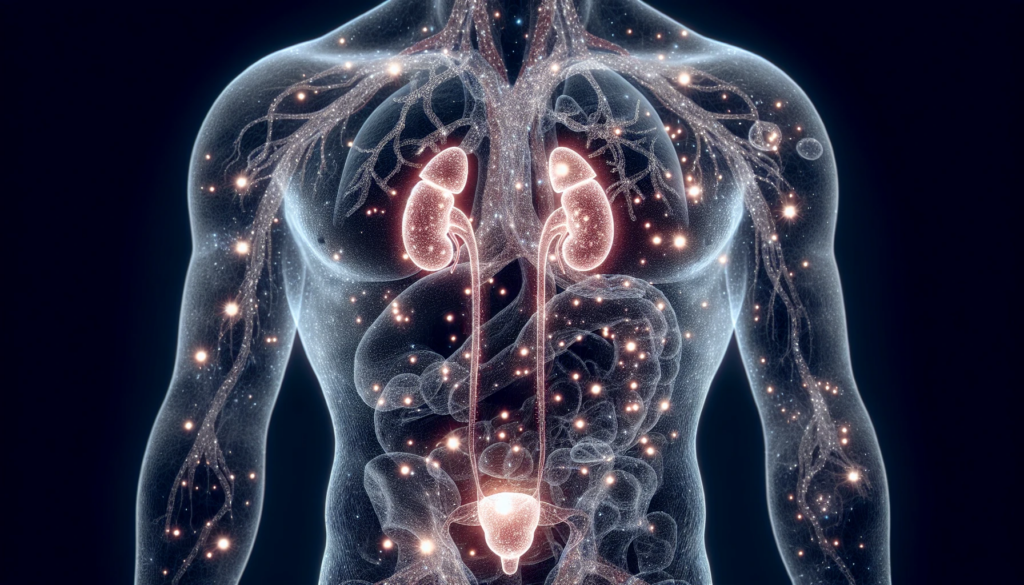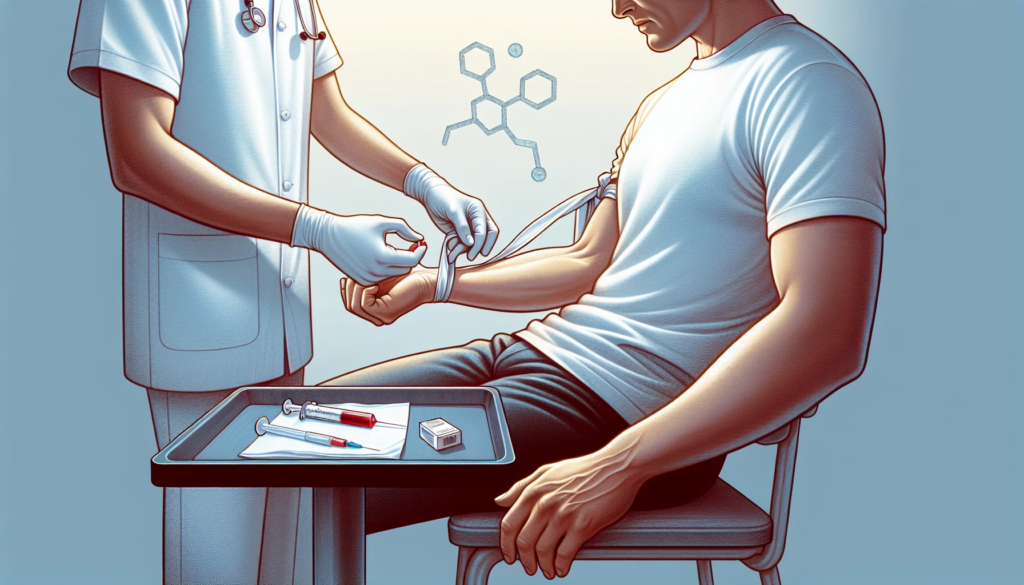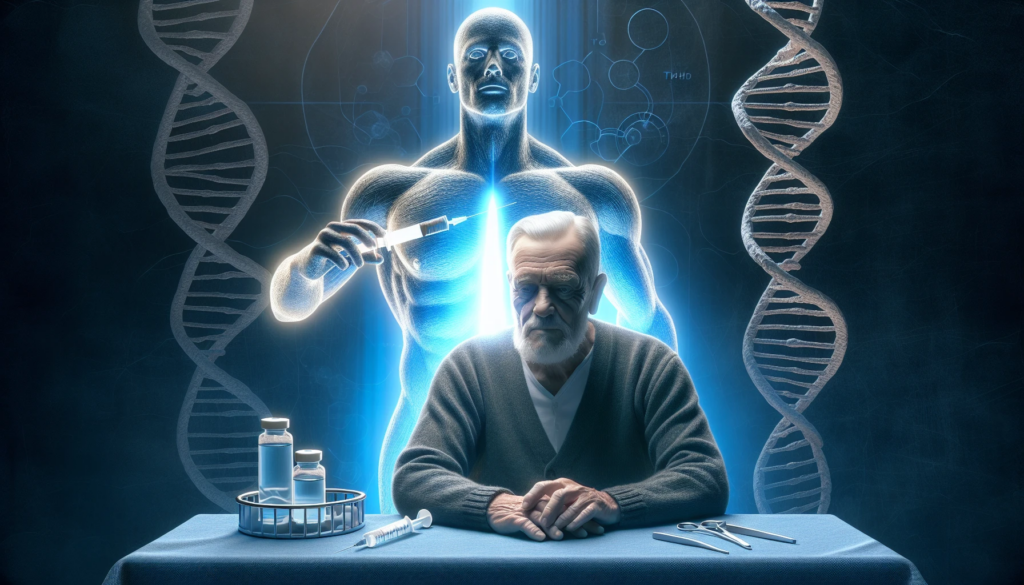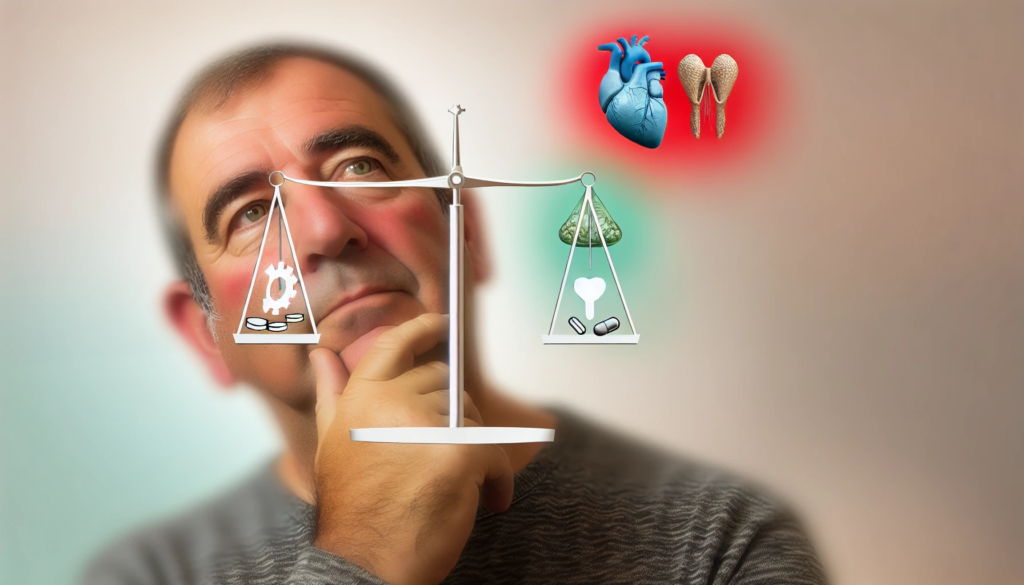Understanding Andropause: Symptoms, Solutions, and Support
As men age, they may face a condition called andropause, commonly known as male menopause. This natural aging process can lead to a decline in testosterone levels, causing changes in physical and emotional well-being. How can one identify andropause, and what treatment options are available? This insightful blog post will shed light on the symptoms, causes, diagnosis, and treatment of andropause, along with support and resources available for those experiencing it.
Key Takeaways
- Andropause is the age-related reduction in testosterone production which can cause physical and emotional symptoms.
- Diagnosis involves a combination of symptom evaluation, medical history review and blood tests to measure testosterone levels.
- Treatment options include Testosterone Replacement Therapy (TRT) and lifestyle modifications, while support groups provide emotional guidance for men experiencing Andropause.
Understanding Andropause: The Basics

Andropause, or male menopause, is an inevitable part of the aging process that affects men as they grow older. A gradual decline in testosterone levels leads to several physical and emotional symptoms affecting a man’s life. With the use of testosterone therapy and lifestyle modifications, these symptoms can be mitigated. However, correct diagnosis and management are necessary for achieving the best results.
What is Andropause?
Andropause, also known as male menopause, refers to the age-related reduction in testosterone production in men. This decline typically begins around the age of 40 and is a natural part of the aging process. While menopause in women leads to infertility, andropause does not cause infertility in men. The main difference between the two lies in the speed of the hormonal decline – menopause occurs rapidly, while andropause transpires gradually.
With the decline in testosterone levels, men may experience various health issues and changes in well-being, such as:
- fatigue
- insomnia
- mood changes
- fertility problems
These symptoms can significantly affect a man’s quality of life, underlining the need to comprehend the condition, recognize its symptoms, and pursue suitable treatment.
Causes of Andropause
The primary cause of andropause is the natural decline in testosterone production as men age. However, other factors can also contribute to the onset of andropause, such as obesity and chronic illnesses. Studies have shown a close correlation between obesity and low serum testosterone levels in healthy men. Moreover, chronic illnesses, including metabolic conditions and chronic renal or pulmonary disease, can influence the onset of andropause by decreasing testosterone levels and inducing hormonal imbalances.
As men age, their hormone production, specifically testosterone, gradually declines by approximately 1 to 2% annually, starting at around age 40. This decrease can cause a variety of effects on men’s health and well-being, emphasizing the need to observe symptoms, seek expert advice, and contemplate treatment options.
Identifying Symptoms of Andropause

Recognizing the symptoms of andropause is an integral step in managing the condition. Symptoms can be both physical and emotional, affecting various aspects of a man’s life and well-being.
The ensuing details will provide information about the various symptoms men might encounter during andropause.
Physical Symptoms
Physical symptoms associated with andropause can include:
- Increased body fat
- Decreased muscle mass
- Erectile dysfunction
- Sleep disturbances
The decline in testosterone levels can lead to an increase in visceral fat, particularly in the abdominal area, and a decrease in lean body mass. Furthermore, the hormonal imbalance can result in a loss of muscle mass due to a reduction in muscle protein synthesis and an increase in muscle breakdown.
Erectile dysfunction during andropause may be attributed to a decrease in sex hormones, growth hormone, and insulin-like growth factor-I (IGF-I). Sleep disturbances, such as sleep apnea and insomnia, can also be linked to the decreased testosterone levels associated with andropause.
Emotional Symptoms
In addition to physical symptoms, men experiencing andropause may also face emotional challenges. Common emotional symptoms include irritability, depression, and a decrease in libido or sex drive. Depression in men undergoing andropause can manifest as sustained feelings of dejection, exhaustion, diminished vigor, irritability, and emotional fluctuations.
The reduction in testosterone levels can lead to a decrease in libido and sexual desire, as well as fatigue and moodiness, which can further impede sexual desire. Acknowledging and addressing these emotional symptoms plays a significant role in effectively managing andropause.
Diagnosing Andropause: Tests and Procedures

Diagnosing andropause is a vital step in managing the condition and finding the most appropriate treatment. To achieve an accurate diagnosis, healthcare professionals need to evaluate a patient’s symptoms, medical history, and conduct blood tests to measure testosterone levels.
The ensuing details will provide information about the tests and procedures involved in diagnosing andropause.
Blood Test for Testosterone Levels
A blood test is used to measure a man’s testosterone levels and help determine if andropause is the cause of the symptoms experienced. The mean testosterone threshold for the majority of symptoms is 300 ng/dl (10.4 nmol/l). It is essential to confirm low testosterone concentrations in men with an initial testosterone level in the mildly hypogonadal range, as 30% of such men may have a normal testosterone level on repeat measurement.
In cases where total testosterone concentrations are close to the lower limit of the normal range and altered sex hormone-binding globulin (SHBG) levels are suspected, it is appropriate to measure free or bioavailable testosterone concentrations.
Evaluating Symptoms and Patient History
Evaluating a patient’s symptoms and medical history is crucial in diagnosing andropause, as other conditions may present similar symptoms. Late onset hypogonadism, testosterone deficiency, androgen deficiency, and the late stages of male aging can present symptoms similar to those of andropause, such as fatigue, insomnia, mood changes, low sex drive, and weight gain.
A patient’s medical history for the diagnosis of andropause is evaluated through:
- Clinical symptoms
- Questionnaires that assess the reported symptoms
- Physical examination
- Knowledge of the patient’s history
It is essential to differentiate andropause from other conditions with similar symptoms to ensure proper diagnosis and treatment.
Treatment Options for Andropause

Once andropause is diagnosed, there are a variety of treatment options available to help manage symptoms and improve overall well-being. These options include testosterone replacement therapy and lifestyle modifications.
The ensuing details will provide in-depth information about these treatments.
Testosterone Replacement Therapy (TRT)
Testosterone replacement therapy (TRT), also known as testosterone treatment, is a common treatment for andropause, which involves supplementing the body’s natural male hormone testosterone production with synthetic testosterone. TRT can be administered through:
- Injection
- Pill
- Implant
- Patch
- Topical gel
TRT offers various benefits such as enhanced sexual function and libido, and increased muscle mass.
TRT carries the risk of potential side effects. Therefore, it is important for patients to be monitored regularly to avoid any serious health implications. Patients should be aware of the potential risks and benefits of testosterone replacement therapy and consult with their healthcare provider to determine the most appropriate treatment option for their needs.
Lifestyle Modifications
Lifestyle modifications, such as regular exercise, a healthy diet, and stress reduction, can help alleviate symptoms of andropause and improve overall health. Engaging in cardiorespiratory exercise programs, strength training exercises, and regular physical activity can improve health, increase testosterone levels, and reduce symptoms.
A well-balanced diet comprising:
- low-dairy foods
- legumes
- green leafy vegetables
- fruits
- whole grains
- calcium-rich items
can also help manage andropause symptoms. Moreover, reducing stress and ensuring adequate sleep are essential in managing andropause symptoms. Adopting healthier lifestyle choices can lead to a better quality of life for men experiencing andropause.
Managing Risks and Monitoring Progress

It is necessary to manage the risks associated with andropause treatment and track the progress to ensure the best possible outcomes for patients. The following details will highlight the significance of evaluating potential risks and observing treatment outcomes in the management of andropause.
Assessing Potential Risks
Before beginning any treatment plan, it is crucial to assess the potential risks associated with treatment, including the possible side effects of testosterone replacement therapy. For example, testosterone can stimulate growth and exacerbate symptoms in men with locally advanced and metastatic prostate cancer. Therefore, it is essential that hypogonadal older men receive counseling regarding the potential risks and benefits of testosterone replacement prior to treatment and are monitored carefully for prostate safety during treatment.
In addition to prostate cancer risks, other potential side effects of testosterone replacement therapy should be considered. Evaluating these risks allows healthcare providers to make knowledgeable choices about the most suitable treatment options for their patients.
Monitoring Treatment Outcomes
Monitoring treatment outcomes, including symptom improvement and potential side effects, is essential to ensure the effectiveness and safety of andropause treatment. Healthcare providers typically monitor treatment outcomes through the use of screening tools to identify symptoms and evaluate male health. Additionally, body composition, fat mass, muscle mass, strength, and other relevant factors may be assessed to gauge the effectiveness of treatment.
Regular monitoring of hormone levels and overall health during testosterone replacement therapy is also crucial. Closely observing treatment outcomes enables healthcare providers to adjust treatment plans as necessary, guaranteeing the best possible outcomes for their patients.
Support and Resources for Men Experiencing Andropause
Support and resources are available for men experiencing andropause, including support groups and professional guidance. These resources can help men navigate the challenges of andropause and find the most effective treatment options for their individual needs.
Finding Support Groups
Support groups can be an invaluable resource for men experiencing andropause. They provide a platform for individuals to:
- Share their experiences
- Offer emotional support to one another
- Connect with others who understand their experiences
- Discuss their challenges
- Provide assistance to one another
These groups create a secure atmosphere for men to find support and navigate through the challenges of andropause.
To find local support groups for men experiencing andropause, one can conduct an online search or consult their doctor or therapist for recommendations. Joining a support group can help men practice self-care, acquire healthy coping strategies, and regulate stress, leading to an improved general state of health and wellness.
Accessing Professional Guidance
Reaching out for professional advice from healthcare providers and specialists can assist men to tackle the challenges of andropause and identify the most effective treatment options tailored to their needs. Some professionals who can play a role in managing andropause symptoms include:
- Doctors
- Endocrinologists
- Urologists
- Psychologists
These professionals can provide counseling, therapy, and treatment recommendations.
Healthcare providers are responsible for:
- Diagnosing andropause
- Providing educational and counseling services
- Recommending lifestyle changes
- Prescribing hormone replacement therapy
- Monitoring treatment efficacy
- Offering support and guidance
By seeking professional guidance, men can ensure that they receive the most appropriate care and support throughout their andropause journey.
Summary
In conclusion, andropause is a natural part of the aging process in men, leading to a decline in testosterone levels and a range of physical and emotional symptoms. Accurate diagnosis, effective treatment options, and the support of healthcare professionals and fellow sufferers are crucial in managing andropause and improving overall well-being. By understanding and addressing the symptoms, causes, and potential risks, men can navigate the challenges of andropause and maintain a healthy, fulfilling life.
Frequently Asked Questions
What are 3 symptoms of andropause?
At what age does a man go through andropause?
What helps with andropause?
Do men get moody at 40?
What is the primary cause of andropause?
Call us at Philly Wellness Center to start your journey.
Call or Text +1 (215) 709-971
Our Article
Ready to Transform Your Weight Loss Journey?
Unlock the Power of Semaglutide – Your Path to Effective and Sustainable Weight Loss.
Schedule AppointmentAny Question ?
